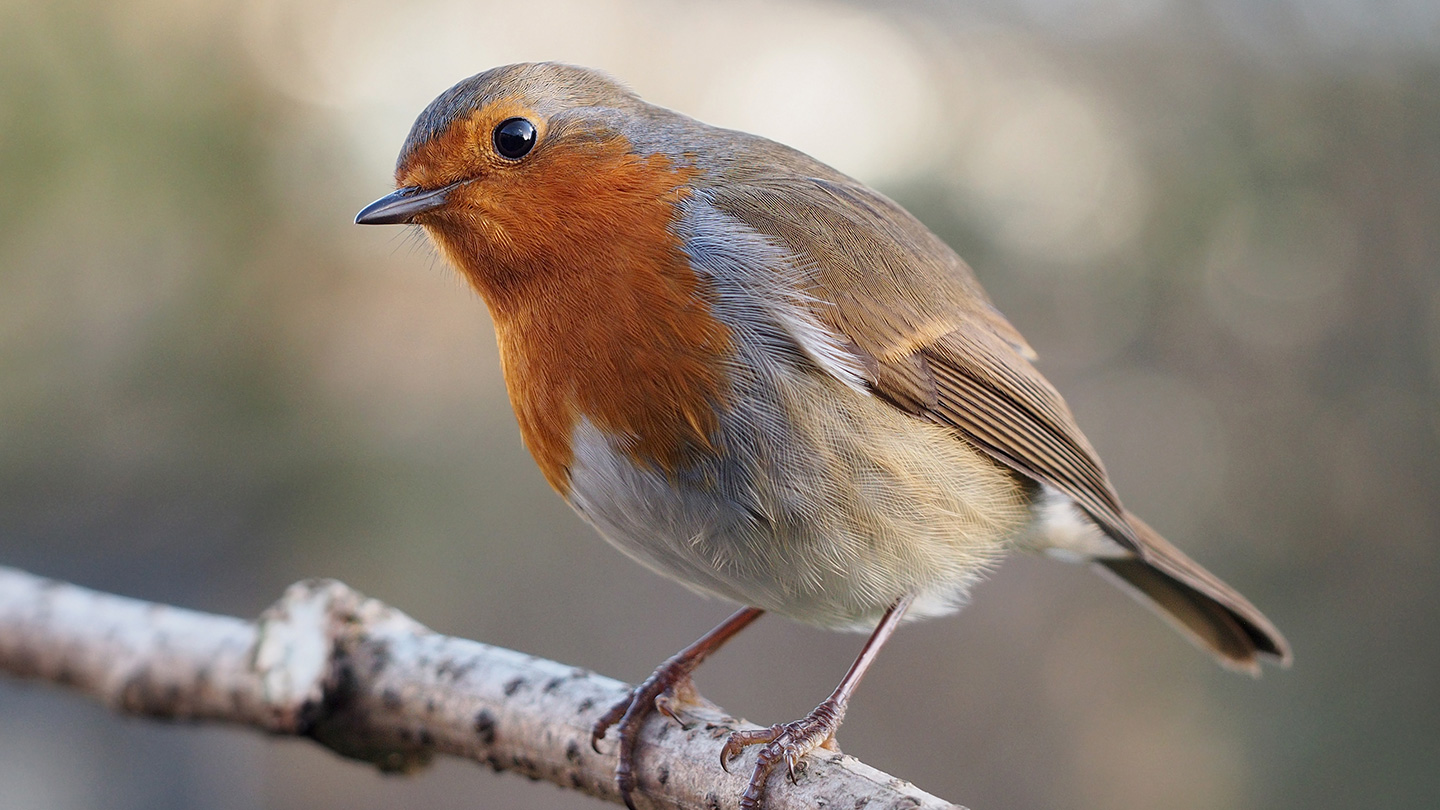A proposed ‘quantum compass’ for songbirds just got more plausible
Scientists could be a step closer to understanding how some birds might exploit quantum physics to navigate.
Researchers suspect that some songbirds use a “quantum compass” that senses the Earth’s magnetic field, helping them tell north from south during their annual migrations (SN: 4/3/18). New measurements support the idea that a protein in birds’ eyes called cryptochrome 4, or CRY4, could serve as a magnetic sensor. That protein’s magnetic sensitivity is thought to rely on quantum mechanics, the math that describes physical processes on the scale of atoms and electrons (SN: 6/27/16). If the idea is shown to be correct, it would be a step forward for biophysicists who want to understand how and when quantum principles can become important in various biological processes.
In laboratory experiments, the type of CRY4 in retinas of European robins (Erithacus rubecula) responded to magnetic fields, researchers report in the June 24 Nature. That’s a crucial property for it to serve as a compass. “This is the first paper that actually shows that birds’ cryptochrome 4 is magnetically sensitive,” says sensory biologist Rachel Muheim of Lund University in Sweden, who was not involved with the research.
Scientists think that the magnetic sensing abilities of CRY4 are initiated when blue light hits the protein. That light sets off a series of reactions that shuttle around an electron, resulting in two unpaired electrons in different parts of the protein. Those lone electrons behave like tiny magnets, thanks to a quantum property of the electrons called spin.
The two electrons’ magnets can point either parallel to one another or in opposite directions. But quantum physics dictates that the electrons do not settle on either arrangement. Rather they exist in a limbo called a quantum superposition, which describes only the probability of finding the electrons in either configuration.
Magnetic fields change those probabilities. That, in turn, affects how likely the protein is to form an altered version instead of returning to its original state. Birds may be able to determine their orientation in a magnetic field based on how much of the altered protein is produced, although that process is not yet understood. “How does the bird perceive this? We don’t know,” says chemist Peter Hore of the University of Oxford, a coauthor of the new study.
The idea that cryptochromes play a role in birds’ internal compasses has been around for decades, but “no one could confirm this experimentally,” says Jingjing Xu of the University of Oldenburg in Germany. So in the new study, Xu, Hore and colleagues observed what happened when the isolated proteins were hit with blue laser light. After the laser pulse, the researchers measured how much light the sample absorbed. For robin CRY4, the addition of a magnetic field changed the amount of absorbance, a sign that the magnetic field was affecting how much of the altered form of the protein was produced.
When the researchers performed the same test on CRY4 found in nonmigratory chickens and pigeons, the magnetic field had little effect. The stronger response to the magnetic field in CRY4 from a migratory bird “could suggest that maybe there is really something special about the cryptochromes of migratory birds that use this for a compass,” says biophysicist Thorsten Ritz of the University of California, Irvine.
But laboratory tests with chickens and pigeons have shown that those birds can sense magnetic fields, Ritz and Muheim both note. It’s not clear whether the higher sensitivity of robin CRY4 in laboratory tests is a result of evolutionary pressure for migratory birds to have a better magnetic sensor.
One factor making interpretation of the results more difficult is that experiments on isolated proteins don’t match the conditions in birds’ eyes. For example, Xu says, scientists think the proteins may be aligned in one direction within the retina. To further illuminate the process, the researchers hope to perform future studies on actual retinas, to get a literal bird’s-eye view.
For all the latest Technology News Click Here
For the latest news and updates, follow us on Google News.


